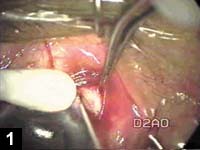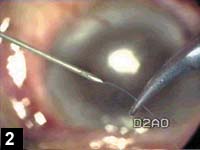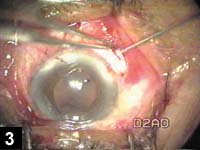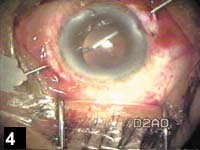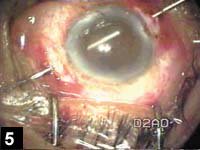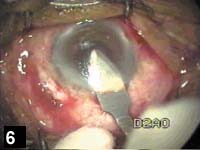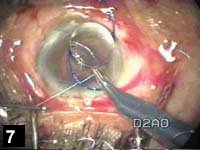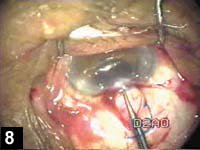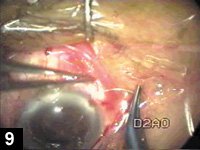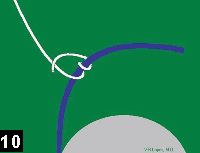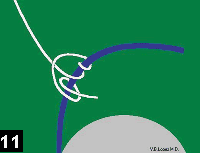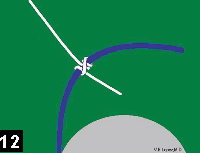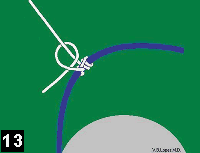Sailors’ knot helps prevent slippage of suture-fixated IOLs
The rolling hitch knot becomes tighter the more pressure is exerted on it.
I learned to tie the rolling hitch knot while taking sailing lessons. It is a particularly useful knot when tying a line to a vertical post, as the knot will not slip downward. The more downward pressure is applied, the tighter the knot becomes.
I have used a modification of the rolling hitch knot to secure secondary posterior chamber IOLs in several patients.
Often, in cases in which the posterior capsule is broken, the surgeon is faced with absent or inadequate capsular support for a posterior chamber IOL. He or she may be caught unprepared without the IOL design or power optimally suited for suture fixation. In cases where one elects to do suture-fixation of an IOL, the surgeon can encounter slippage of the knot from the haptic, because more often than not one has to use the IOL prepared preoperatively.
Several techniques have been suggested to solve this problem, including the use of cautery to create a rough surface on the haptic to stop the suture from slipping. The disadvantage of this, however, is that too much cauterization can result in deformity, weakening and even breakage of the haptic.
A modification of the rolling hitch knot may just be the answer to the slippage problem in these cases. I modify it by adding a couple of half hitches for extra security.
I have found this knot to be ideal for tying the 9-0 polypropylene suture to the PMMA haptic without slippage.
Surgical technique
Fornix-based conjunctival incisions are made at the 4-to-5-o’clock and the 10-to-11-o’clock positions, avoiding the horizontal anterior ciliary vessels. A 2-mm scratch incision is made 2 mm from the limbus in these areas.
Scleral pockets are made about 0.5 mm posteriorly (figure 1). This is done to hide the knots without having to suture the sclera.
Two long 27-gauge or 30-gauge needles are prepared, slightly bent at the base to avoid the nose and the brow prominence. On one needle, about 10 mm of the free end of a 9-0 polypropylene suture is threaded into the pointed lumen of the needle (figure 2). This is entered into the eye in the middle of the base of the scleral pocket, which is about 2.5 mm from the limbus (figure 3).
The other needle is entered at the same area of the opposite scleral pocket. The pointed end of the first needle with the polypropylene suture is inserted in the beveled lumen of the second needle (figure 4) and is guided by the second needle out to the opposite entrance (figure 5).
The suture from the needle is then grasped and the needle taken out.
A 3.5-mm clear corneal incision is made in the superior quadrant (figure 6). A viscoelastic substance is injected into the anterior chamber. The polypropylene suture is retrieved from the corneal incision using an iris hook, a fine skin hook or fine forceps.
The suture is cut in half, and each end is tied to the middle third of the PMMA haptics of a 6-mm optic, 13-mm diameter acrylic IOL (figure 7). This is done using a rolling hitch knot with the two loops at the side of the haptic’s end tightened and secured with two half hitches.
The IOL is irrigated with saline or viscoelastic to prevent its sticking together before it is folded and inserted into the posterior chamber (figure 8). The polypropylene is then sutured to the sclera inside the scleral pocket (figure 9). The conjunctiva may be closed, if necessary, using the same suture.
Modified rolling hitch
To execute this knot, the suture is placed on top of the haptic. It is looped around two times toward the end of the haptic (figure 10). This is then crossed to the other side and looped once and locked under the loop. Two half hitches are made for added security (figures 11, 12 and 13).
|
|
|
|
|
|
|
|
|
|
|
|
|
|
|
|
|
|
|
|
For Your Information:
- Victor B. Lopez, MD, is an assistant professor at the University of the East College of Medicine in the Philippines and in solo practice in general ophthalmology; ophthalmic plastic and reconstructive surgery at the Makati Medical Center, Suite 242, 2 Amorsolo St., Makati City, Philippines 1200; (632) 892-9619; fax: (632) 893-4367; e-mail: vblmd@pacific.net.ph.

